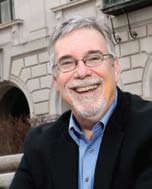Researchers diagnose health consequences of marriage, divorce
So, why aren’t you married? It’s an age-old question dreaded by singletons. The underlying assumption of the awkward inquiry: there is something wrong with being single and one’s life is somehow incomplete without a partner.
But does marriage mean you will live happily, and healthfully, ever after?
Research does reveal that married people live longer than their single counterparts. They have lower rates of heart failure and cancer, develop expanded networks of social support and have more frequent sex. However, the reasons why married people tend to be
healthier are not fully understood, says Debra Umberson, professor of sociology and affiliate of the Population Research Center at The University of Texas at Austin.
“In recent years, the health disparity between the marrieds and the never-marrieds has actually narrowed,” Umberson says. “After investigating what people get out of relationships, we’ve found that it is not the case that any marriage is better than no marriage at all when it comes to health benefits.”
The Honeymoon is Over

Umberson’s recent study, “You Make Me Sick,” shows that while a good marriage may offer health benefits, a bad marriage can be detrimental to your health. “I’ve always been interested in how people want to be in relationships, but then often seem miserable once they are in one,” she says. “For many people, relationships are a doubleedged sword.”
Umberson and a team of researchers examined more than 1,000 married couples in three waves of interviews as part of a study supported by the National Institute on Aging. Participants answered a series of questions about their marital quality, such as:
• How satisfied are you with your marriage?
• How much does your husband/wife make you feel loved and cared for?
• How much is he/she willing to listen when you need to talk about your worries or problems?
• How often do you feel bothered or upset by your marriage?
• How often would you say the two of you typically have unpleasant disagreements or conflicts?
Responses reveal that marital strain is a key source of stress, which can affect one’s immune system and accelerate the typical decline in health that occurs over time, especially as couples age. In other words, a wedding ring doesn’t guarantee good health.
However, she notes the purpose of the study is not to issue a call for divorce but to raise awareness about the importance of identifying marital difficulties and seeking to improve marital quality.
Health Consequences of Divorce

Mark Hayward, sociologist and director of the Population Research Center, says his work has a similar purpose. He researches the health consequences of divorce. “The choices we make in our relationships can permanently affect our health trajectories later in life,” Hayward explains.
In a recent study funded by the National Institute on Aging, Hayward found that divorced, middle-aged women are 60 percent more likely to have cardiovascular disease than women who remain married. “Divorce is one of the most stressful things a person can go through in life, so it makes sense that it has such a pronounced effect on women’s cardiovascular health,” Hayward says.
The sociologist’s study, with colleague Zhenmei Zhang at Michigan State University, is based on data from the Health and Retirement Study, which tracked a nationally representative sample of nearly 10,000 men and women aged 51-61 from 1992 to 2000.
Hayward found divorced women have the lowest household income and wealth, compared to married women, widows and women who remarry. “Divorce clearly leads to a drop in financial resources,” he says. “Add that to the emotional distress that can stem from a change in residence, loss of social support or the potential of single parenting, and divorced, middle-aged women are facing incredible stress that puts them at a distinct disadvantage when it comes to their cardiovascular health.”
Divorce, however, does not increase the odds of heart disease among middle-aged men. “Men’s health is not immune to divorce,” Hayward notes. “But because men typically get heart disease at younger ages than women, the effect of divorce for men may play out before middle age. Also, divorce appears to have negative consequences for other major health problems among middleaged men—just not cardiovascular disease.”
Hayward was surprised the negative consequences of divorce did not go away with time, showing that divorce’s effects on women’s cardiovascular health appear to linger long after the divorce. “From a social policy perspective,” Hayward says, “we need to think about how we can help women navigate the divorce experience so that it doesn’t have such significant health consequences.”
Importance of Careful Mate Selection

Kelly Raley, associate professor of sociology and affiliate of the Center for Women’s and Gender Studies, says the negative health consequences of a bad marriage and divorce underscore the importance of why individuals should be extremely careful in mate selection.
In the study, “Not Even if You Were the Last Person on Earth,” Raley examined how the process of mate selection influences the timing of marriage. The median age of marriage has climbed steadily since the early 1970s. In 1970, the median age for women to marry was 20.8 and for men, 23.2. By 1995, both men’s and women’s median age at marriage had increased 3.7 years, to 26.9 and 24.5, respectively.
“An explanation for delays in marriage past age 23 could be that there is a growing mismatch between what men are looking for in a mate and what women are looking for,” Raley says. “If both men and women hope to improve their financial status by marrying a higher-earning spouse, it will take longer for both to find a suitable mate.”
Raley found that men who were unwilling to marry a woman who earned less than they did were less likely to marry. “Interestingly, men were more willing to marry women with higher education and earning power than themselves, which is in contrast to previous ideals of marriage,” Raley says.
“This suggests that the foundation of marriage is changing and that men now recognize the potential benefit
of a higher earning partner. We’re now looking at marriage as a cooperative relationship rather than one of rigid gender roles.”
Defending Marriage

In a recent opinion piece for the Dallas Morning News, “In Defense of Marriage,” Norval Glenn, professor of sociology, wrote that for most adults, marriage is still the best arrangement for providing material and emotional security. However, Glenn admits the institutional mechanisms for bringing people together are not working like they used to. As more people choose to marry later in life, few social institutions have arisen to replace the role that local communities, families and schools once played.
Still, Umberson and Raley assert the stigma of singlehood is in decline. “Previously, the choice to never marry was viewed as deviant or extremely tragic,” Umberson says. “Today that’s just not the case.” We know marriage has health benefits for both men and
women, Hayward adds, but it’s a complex story. As divorce rates level off, cohabitation becomes increasingly common and the median age of marriage increases. But, it’s not clear how future marriage trends will affect health outcomes, he concludes.
“Increasingly,” he says, “couples are in a two-income household, many face long commutes, education costs are rising and the paycheck doesn’t stretch as far. The middleclass crunch adds stress and social circumstances that have health consequences for marriage that we’re just now starting to study. And, there are no easy solutions for how we solve these problems.”
